












a Ritz Family Publication
President/CEO
Michael Ritz – mikeritz@ritzfamilypublishing.com
General Manager
Brenda Stoner – brenda@ritzfamilypublishing.com
Office Assistant
Kyle Heisey – kyle@ritzfamilypublishing.com
Sales
Kevin Davis – kevin@farmranchdairy.com
Pat Drury – pat@ritzfamilypublishing.com
Graphic Design
Julia Rehmke – julia@ritzfamilypublishing.com

Corporate Office
Ritz Family Publishing, Inc.
714 N Main Street Meridian, ID 83642 www.ritzfamilypublishing.com
Sales
For all sales inquiries, call toll free 1-800-330-3482 or 1-208-955-0124
info@ritzfamilypublishing.com
Subscriptions
For a subscription or to change your mailing address, call toll free: 1-800-330-3482 or 1-208-955-0124
info@ritzfamilypublishing.com
Printed
By ESP Print + Mail, Boise, ID
Copyright© 2024. All rights reserved.
Every effort has been made to ensure accuracy of this publication, however, the publisher does not assume responsibility for omissions or typographical errors. The publisher does not assume responsibility or is liable for the contents of any advertising herein. Publisher’s liability for errors in an advertisement is limited to a correct insertion in the next publication. In the event of a misprint, the publisher must be informed of such error prior to printing of the next publication.




The dry summer and fall of last year and the bitter cold this winter have combined to make hay a valuable commodity. This has made many consider putting cropland to a temporary hay crop, such as sorghum-sudangrass or teff. At the same time, the explosion in China soybean purchases has made raising soybeans a very attractive proposition as well. It is nice for a change to be faced with actual profitable choices! But when faced with two attractive choices, why not choose both?
One thing the cover crop movement has taught us is that growing crops in rapid sequence does not exhaust soil, rather it feeds the soil microbes that increase soil productivity. It is entirely possible to plant a crop of oats, peas or spring triticale (or a mix of all three) in March and have a hay crop made by May, in plenty of time to plant soybeans. Not only can the hay crop make as much revenue as we typically expect from a bean crop alone but growing the hay can create a nice stubble to control soil erosion and improve water infiltration and rooting depth and may offer weed control benefits as well. Spring triticale is an unfamiliar crop to a lot of people, but it is a real rising star in the forage and cover crop world. A cross between rye and spring wheat, it has hybrid vigor compared to either parent. Compared to spring oats, it can yield much higher, and is more competitive against weeds. The quality drops after heading relative to oats, but most people prefer to bale in boot stage to leave as much growing season for the following crop as they can. Peas add both additional yield and additional protein to the mix. Or maybe you would prefer to focus on hay and forgo the beans altogether. In that case, why not grow two hay crops rather than one? You can raise the oat/pea/spring triticale, then follow with a summer forage crop as well. For maximum tonnage you could try a crop of dry stalk sorghum-sudangrass, which offers the high yield of sorghum-sudan in a faster drying package. Alternately, teff grass offers a very rapid drying hay option, while cowpeas or mung beans offer high protein options, Can’t make up your mind? Plan all of them in combination to hedge your bets. If your pastures are beat up after last summer’s drought, you could pasture this crop in late summer and give your perennial pastures a much-needed chance to restore vigor and grow deeper roots to weather the next drought. And, if spending all summer baling hay and spending all winter feeding hay sounds less than appealing to you, how about planting a crop that can be stockpiled and grazed without all that work, such as a crop of brown midrib sterile sorghum, with some companion crops for added protein
and energy? Many people are using this very economical means of wintering livestock now with great success. In the fall, you can add yet another forage crop, drilled right into the living stubble of the summer mix as soon as it is hayed or grazed off in late summer. At first glance, this seems to doom the new seedlings to certain failure, as they are competing with the regrowth of the established summer crop for moisture and light. But it doesn’t work that way. The transpiration of moisture from the regrowth of the summer crop cools the soil, dropping the temperature as much as 30 degrees relative to the air temperature. The cool-season seedlings need only 10% of the moisture at 80 degrees as they do at 100 degrees, so drilling a cool-season pasture mix of oats, triticale, rye, ryegrass, turnips, radishes and peas right into unkilled stubble of a summer annual mix can actually increase the survival of the seedlings. After a hard freeze has killed and thoroughly dried the summer plants, they can be grazed off right along with the green growth of the cool-season mix, saving on winter hay needs and providing much higher quality nutrition than hay. Besides, you also save the cost of termination! Best of all, the growing of crops in rapid succession provides those vital soil microbes a continual flow of nutritious root exudates for improving soil structure and water-holding capacity for better crops in the future.



One Call of Wyoming is a nonprofit organization that administers the 811 notification center within the state of Wyoming. Any entity within the state that owns/operates any underground facilities shall, by statute, register their location and contact information with the notification center, there are few exceptions to this requirement. If a person is involved in any activity in which earth, rock or other materials on or below the ground is moved or otherwise displaced by means of hand or power tools, power equipment, explosives or other means, and includes grading, trenching, digging, ditching, auguring, tunneling, boring, plowing in, pulling in, ripping, scraping and pipe installing, EXCEPT TILLING OF SOIL AND GARDENING OR AGRICULTURAL PURPOSES. They must call the notification center by dialing 811 in Wyoming or from out of state dial 1-800-849-2476 at least 2 full business days, and not more than 14 full business days, prior to beginning their excavation.
Once the notification center (811) has been contacted, the center will send out notifications to our member, operators/ owners, to let them know of your intended excavation activity near their underground facilities within the next 2 to
14 business days. The members must respond to the excavator within the 2 full business days and either clear the described dig area or mark their facilities within the described dig area in some fashion within 2 feet of the actual facility location. PLEASE, for your safety and for the safety of the general public, and the protection of our vital underground infrastructure. Submit your request online at www.onecallofwyoming.com or dial 811 from within Wyoming, or if calling from out of state please dial 1-800-849-2476 at least 2 full business days prior to beginning, ANY excavation activity.
Submitted by One-Call of Wyoming’s Administration Office Locate Number 1-800-849-2476


some of the most things, though, challenges has left behind.
Durham Stalk Pusher Burlington, Colorado. roller design was Simply roll over the anything more all, leaving the till farming.
Strip Till farmers have long been considered some of the most progressive in the industry. Like most things, though, there have been challenges. One of those challenges has been tire and or trac damage caused by corn stalks left behind. Seeing a need to mitigate tire damage, The Durham Stalk Pusher was invented in 2008 by Galan Durham of Burlington, Colorado.
The idea may not have been unique, but the roller design was the first of its kind. The concept is simple.
Simply roll over the stalks to lay them down. There is no need for anything more aggressive or destructive to the corn stalk. After all, leaving the stalk in the field was the purpose behind strip till farming.
Durham Ag Tech has the best quality product among tire mitigation products and is able to boast that it is priced far more reasonably than some of the less user friendly designs currently being sold.
The top 4 reasons that the Durham Stalk Pusher should be your first choice when looking for a tire mitigation product are:

• Cost Effectiveness – An entire unit is priced at less than two tractor tires. This is BY FAR the most reasonably priced unit on the market.
• Ease of Mounting – No need to install multiple pieces to run over each row. That's just more parts that need maintenance. Our Generation III model hangs on the front weight bracket and works for most tractor models. We currently have units available for John Deere, Case and Caterpillar. Each Stalk Pusher arrives with complete mounting hardware and can be installed in under 2 hours.
• Total Clearance – Generation III models boast up to 25" of clearance! This is especially important to the folks that farm uneven terrain. With our oscillating bar, the roller truly follows the contour of the ground.
• Ease of Use – The roller system lays stalks flat, so in contrast to an individual skid system that may catch debris, this won’t catch trash!
The Durham Stalk Pusher has branched out all over the Midwest and has units running in North Dakota, Nebraska, Kansas, Oklahoma, Texas, Ohio, Iowa and of course its home state of Colorado. Several customers have purchased multiple units so that they can have one on each of their tractors!
For more information on the Durham Stalk Pusher visit www.durhamagtech.com

Knockers are the most user friendly and lightest weight option on the market. No need to be removed when trailering, saving valuable time. They were invented by two farmers in southwest Iowa looking for a better solution for managing stalk residue on their own farm. www.stalkknockers.com .










After carefully listening to customers who were disappointed with the performance or lack of features in ATV sprayers available, C & R Supply set out to design a series, or family of sprayers to meet their needs.
The family began with the EZ ATV Sprayer which features a unique tank design that was created with input from customers and ATV manufacturers. Using this input, and keeping the operator in mind the EZ ATV Sprayer was designed for ease of operation, functional ability and safety. The design was a success! This unit has been in demand since 1998 and continues to hold a strong presence in the market today.
The EZ ATV Sprayer has a sleek design which brings the weight forward and more to a center of gravity for better machine balance. Allowing the legs of the tank to wrap around the fenders of the ATV gives the sprayers dual sumps maximum drainage and the ability to run on side hills without losing its prime. The pump, strainer, and main shut off are mounted underneath the tank in a protected cavity, which also serves as a dual slosh baffle. The top of the tank is designed with a fill catch area to prevent chemical from getting on the operator. The EZ Sprayer is fitted with a 4 gpm Shurflo Pump and a quality Tee-Jet trigger style handgun in the convenient control panel at your side. All brackets and boomless nozzle or boom accessories are attached to the tank for quick and easy mounting. The EZ ATV Sprayer has several different options and accessories to meet your needs.

agricultural and roadside spray equipment located in Sioux Falls, South Dakota. For over 40 years, C & R Supply, Inc. has been a leader in the distribution and servicing of many quality products from Raven Industries, Spraying Systems, Banjo, and more. They also lead the way in designing and manufacturing new and advanced products as their customer needs change. This family of quality sprayers began with the introduction of the C & R Foam Marker and Spot Sprayer which progressed to the units we are featuring here today. C & R is a provider of precision ag products such as GPS guidance systems, variable rate controllers, mapping, steering assist systems, and chemical injection units. C & R Supply prides themselves on having the knowledge and experience to continually advance their product line to keep up with ever changing technology in a way that helps producers maximize their output.
As time went on customers began seeing a need in their operation for UTV’s. C & R Supply responded by expanding their family of sprayers. The UTV sprayer was born and it was named the C & R Slide In after its ability to be easily slid on and off the bed of the UTV as needed. The sprayer is mounted on a powder coated frame which allows the unit to be transferred as a single piece of equipment. This sprayer, like its elder sibling, was built with only the highest of quality components. The Slide In features a 60 gal tank, left and right electric controls with wiring harness, a Shurflo 4gm by pass pump, and Boominator nozzles which can spray a width of up to 30 feet. An 8 inch hand gun from Tee Jet with adjustable tip for hand spraying is also included. The Slide In sprayer has options and accessories available to meet the needs of your operation including a convenient retractable hose reel add on and additional boom options.
C & R Supply, Inc. is a distributor and manufacturer of



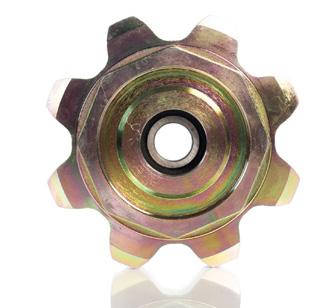








8,000+ New Ag Parts Available At

• AXLES • BLADES • DISC BLADES • HARROW SPIKES • S-TINES • VERTICAL TILLAGE PARTS • TEETH • GRAIN GATES • GRAIN
STORAGE • TOW ROPES • V-BELTS • ZIP TIES AIR CONDITIONING • AUGER TUBES • BELTS • DRIVETRAIN PARTS • 4WD KITS • DISCHARGE PARTS • ENGINE • EXHAUST • FEEDER HOUSE • FILTERS • GRAIN TANK PARTS • LANKOTA • LIGHTS • MUD SCRAPERS • RADIOS • STARTERS • AUGER DRUM • DIVIDERS • PTO SHAFTS • SICKLE PARTS • MANUALS • ROCK BOXES • STEERING • SEATS • STEP KITS • WEIGHTS • ENGINE • DECALS • MIRRORS • MOISTURE
Follow Us On Social!
TESTERS • BALE SPEARS • BALER PARTS • BEAN METERS • CLOSING WHEELS • HOPPERS • GAUGE WHEELS • HITCHES • RUBBER TRACKS • SEED LUBRICANTS • SHOP SUPPLIES • SHANKS • YETTER PARTS • CAMERA SYSTEMS • EXHAUSTS • HOSES • PRESSURE GAUGES • STEERING • AXLES • BLADES • DISC BLADES • HARROW SPIKES • S-TINES • VERTICAL
TILLAGE PARTS • TEETH • GRAIN GATES • GRAIN STORAGE • TOW ROPES • V-BELTS • ZIP TIES


Maui,



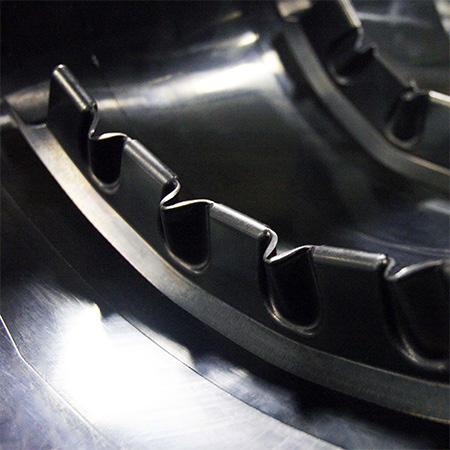
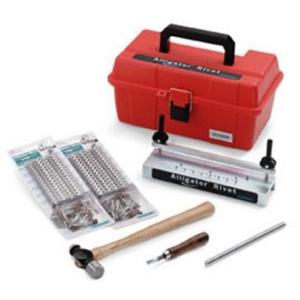




















Depending on where you live and how much stock you put in The Old Farmer’s Almanac, the coming winter could be a snow-filled one. While heavy snowfall brings much needed moisture, moving it and making areas passable creates its own set of challenges. For light snows and smaller areas, bucket loaders and skid steers can get the job done, but when you live in an area where deep snow and high winds are the norm, it may be time to consider a tractor-mounted snowblower.
Clay Zimmerman of Evanston, Wyoming bought a HitchDoc HDS8205 two winters ago. He and his wife own High Uinta Pack Goats, the only pack goat rental service in the country.
“Where I live, it’s all rolling hills and normal snowfall starts at 6 feet deep. The gravel road is only maintained by my neighbor and myself.” For years, Clay’s neighbor
cleared the snow with a bucket mounted to his tractor and it took him all day. That just wasn’t efficient enough, so, Clay started looking into options for a snowblower to mount to his tractor.
“I looked at a dozen brands and even bought one before I bought the HitchDoc, but it wasn’t heavy duty enough.” After more research, Clay opted for the HDS8205 from HitchDoc. He mounted it to the front 3 point hitch of his 140 horsepower tractor so he wouldn’t have to look backwards the whole time and connected it to the hydraulics so he could control it with the joystick.
Now Clay clears the snow for him and his neighbor in about an hour. Clay says his snowblower has enough power to throw snow 100 feet. Reflecting on his purchase, Clay said, “it’s been a life saver. It’s the best purchase I could’ve made.”
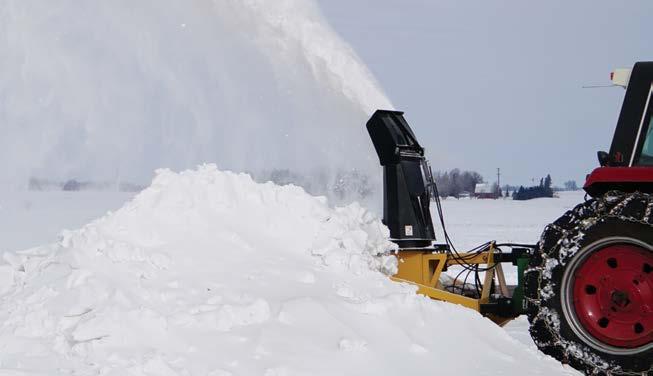













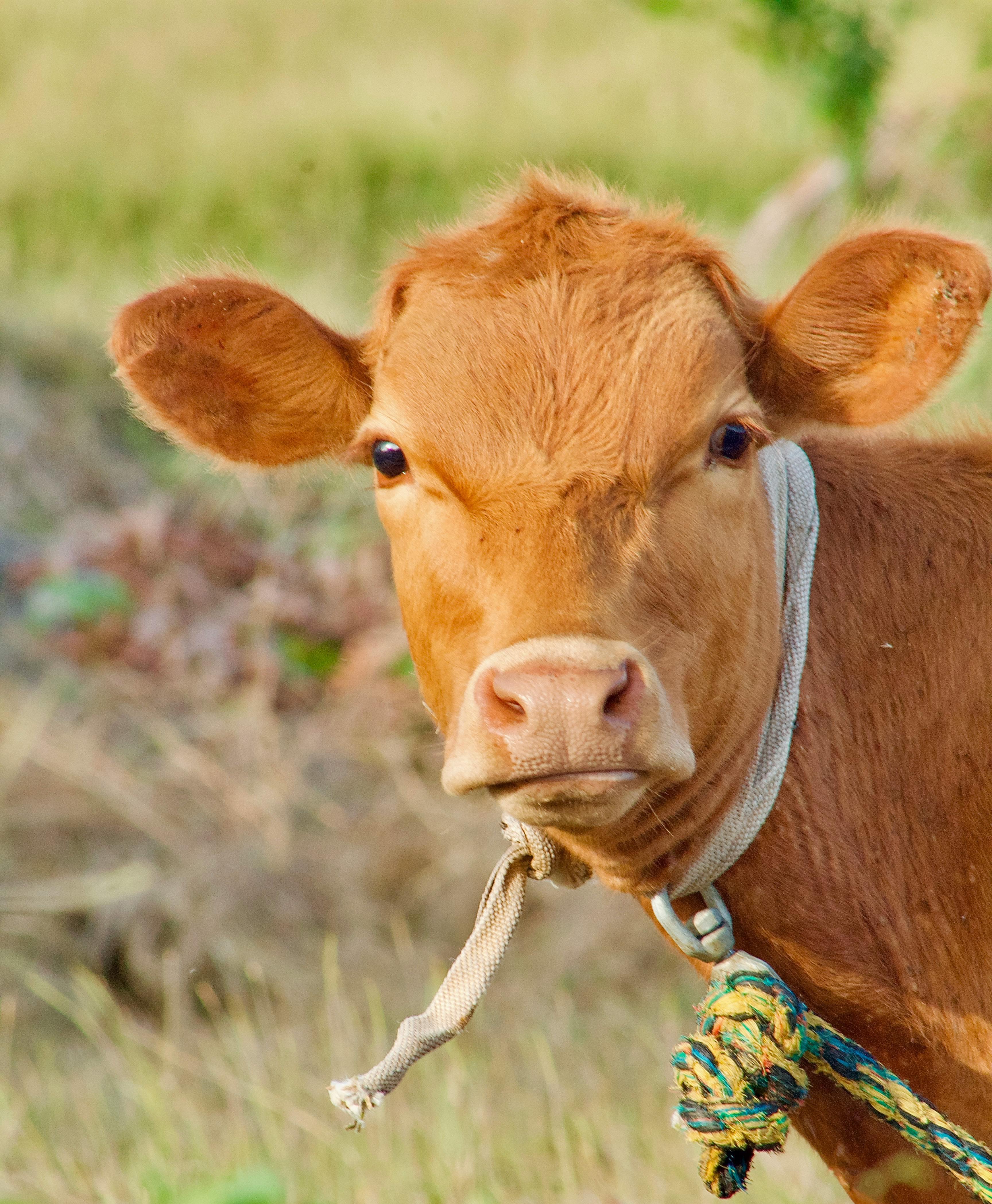
On many eastern US pastures, cattle take one or two steps between bites, but on some western grazing lands, cattle need to take between fifteen and thirty steps. The forages available on the ranges can be very good, but the time window of their peak nutrition can also be very short. There are times when cattle cannot be kept moving enough to find what they need. When cattle do find good grass in these conditions, they can park on that spot, eat everything and create problems with land managers.

What are the rancher’s performance expectations in these conditions? To keep cattle alive, or to grow the herd? The cow needs the right body condition to rebreed and grow a calf every 12 months. Harvey Dietrich of the Diamond A Ranch in Seligman, AZ once said, “You can’t play catch up with a cow.”

Supplementation with SweetPro lick blocks can help keep both cattle and the land healthy. SweetPro blocks are fiber based, not molasses with all its negatives (ie: storage, containers, sugar negative associative effect, microbial digestive upset). Also, unlike the costs of loose mineral daily delivery, SweetPro blocks are easy
to move, clean up and only need to be placed out every 10 days.
SweetPro blocks significantly increase the forage feed efficiency of cattle on these western grasses and help raise body scores to a healthy producing state. This automatically puts up to 25 pounds on the calf at weaning time and helps improve ranching profitability. (Calves don’t need creep feeds when body weight is put on the cow.) Energy and fertility of bulls is also supported to further enhance rebreeding over larger ranges.
SweetPro blocks use DDGS and CDS for even delivery. Supporting animals gut health can help prepare them for the June 2023 Veterinary Client Patient Relationship implementation. SweetPro blocks use minerals, organic trace minerals, prebiotics (including MOS, AXOS, XOS, FOS, & Beta-glucan), postbiotic yeast protein and fiber, all provided to the animal on a fermented carrier without weather issues or over consumption. SweetPro blocks match the forage conditions.

BBeefmaster is a beef breed developed in America that improves beef quality and production efficiency when crossed with any other cattle breed for commercial beef production. The breed originated in Southern Texas in the late 1800’s into the early 1900’s. The Lasater family originally developed a large herd of Hereford cattle carefully selected to withstand the heat and insects of the Texas Gulf Coast region, but they were still not perfectly suited to that difficult environment. So Lasater began to experiment with incorporating Bos indicus or Zebu genetics, in the form of Gyr and Guzerat bulls from India and Nelore from Brazil. While the practice of crossbreeding was virtually unheard of at the time, they immediately saw a tremendous jump in productive traits, such as weight gain and reproductive rates. This is genetic advantage known as heterosis or hybrid vigor.
losophy known today as The Lasater Philosophy. The concept is to only select cattle for economically relevant traits, which he distilled to these Six Essential traits. It is the only breed in history to be selected only using pressure for productive traits, as opposed to aesthetics.
In 1937, the herd was closed to outside genetics with continued internal development to cull low-performers and upgrade all traits together equally. By 1954 the foundation herd was recognized by USDA under the name of Beefmaster.
By the early 1930’s, the ranch also incorporated Milking Shorthorn genetics, to augment milk production and carcass quality. They could immediately see that the three-way hybrid was far superior to the two-way crosses. The final composite ended up at roughly 50% Bos indicus and 50% Bos taurus (25% Hereford and 25% Shorthorn).
eefmaster is a beef breed developed in America that improves beef quality and production efficiency when crossed with any other cattle breed for commercial beef production. The breed originated in Southern Texas in the late 1800’s into the early 1900’s. The Lasater family originally developed a large herd of Hereford cattle carefully selected to withstand the heat and insects of the Texas Gulf Coast region, but they were still not perfectly suited to that difficult environment. So Lasater began to experiment with incorporating Bos indicus or Zebu genetics, in the form of Gyr and Guzerat bulls from India and Nelore from Brazil. While the practice of crossbreeding was virtually unheard of at the time, they immediately saw a tremendous jump in productive traits, such as weight gain and reproductive rates. This is genetic advantage known as heterosis or hybrid vigor.
As Lasater developed the breed, he also formed a unique selection philosophy known today as The Lasater Philosophy. The concept is to only select cattle for economically relevant traits, which he distilled to these Six Essential traits. It is the only breed in history to be selected only using pressure for productive traits, as opposed to aesthetics.
In 1937, the herd was closed to outside genetics with continued internal development to cull low-performers and upgrade all traits together equally. By 1954 the foundation herd was recognized by USDA under the name of Beefmaster.
By the early 1930’s, the ranch also incorporated Milking Shorthorn genetics, to augment milk production and carcass quality. They could immediately see that the three-way hybrid was far superior to the two-way crosses. The final composite ended up at roughly 50% Bos indicus and 50% Bos taurus (25% Hereford and 25% Shorthorn).
As Lasater developed the breed, he also formed a unique selection phi-
The breed has rapidly grown around the world and has become known as the prime maternal cow for serious commercial cattlemen that appreciate their production


excellence, particularly in harsh desert or tropical environments. The breed has excelled across most regions of the United States and is the leading breed of choice for commercial cattlemen in Mexico, South Africa, Thailand, Panama, Columbia and several other Latin American regions. With global demand for higher-quality beef growing geometrically, Beefmasters provide the perfect breed to cross on commercial cattle to improve production efficiency and carcass quality, while not sacrificing adaptability.
Commercial cattlemen have noted substantial economic gains from using Beefmasters to provide an average increase of 60 lbs., or more at weaning when compared with other breeds. They excel post-weaning as well, with faster weight gains, excellent feed conversion and carcass yields around 64%.
The breed has rapidly grown around the world and has become known as the prime maternal cow for serious commercial cattlemen that appreciate their production excellence, particularly in harsh desert or tropical environments. The breed has excelled across most regions of the United States and is the leading breed of choice for commercial cattlemen in Mexico, South Africa, Thailand, Panama, Columbia and several other Latin American regions. With global demand for higher-quality beef growing geometrically, Beefmasters provide the perfect breed to cross on commercial cattle to improve production efficiency and carcass quality, while not sacrificing adaptability.
substantial economic gains from using Beefmasters to provide an average increase of 60 lbs., or more at weaning when compared with other breeds. They excel post-weaning as well, with faster weight gains, excellent feed conversion and carcass yields around 64% In a time when sustainability is becoming increasingly critical, Beefmasters have repeatedly demonstrated that they are highly efficient converters of both forage and feeds into lean, tender, high-quality beef. A recent study at the U.S. Department of Agriculture Meat Animal Research Center (MARC) demonstrated Beefmasters dominance when compared to 18 of the most widely used beef breeds in the United States.
In a time when sustainability is becoming increasingly critical, Beefmasters have repeatedly demonstrated that they are highly efficient converters of both forage and feeds into lean, tender, high-quality beef. A recent study at the U.S. Department of Agriculture Meat Animal Research Center (MARC) demonstrated Beefmasters dominance when compared to 18 of the most widely used beef breeds in the United States.
Beefmaster Breeders United (BBU) is headquartered in Bryan, Texas. Beefmaster ranks fifth in the U.S. in terms of membership and is the largest of the American breeds. The association has over 3,000 members registering around 19,000 calves annually.
Beefmaster Breeders United (BBU) is headquartered in Bryan, Tx. Beefmaster ranks fifth in the U.S. in terms of membership and is the largest of the American breeds. The association has over 3,000 members registering around 19,000 calves annually.
Commercial cattlemen have noted
Beefmasters also enjoy a rapidly growing international footprint, with established associations in eight countries worldwide. T hese i nnovative cat tlemen have seen the tremendous strengths Beefmasters bring to their own genetic improvement programs. For more information about what Beefmasters can do for your operation, please visit us w ww.beefmasters.org. e
Beefmasters also enjoy a rapidly growing international footprint, with established associations in eight countries worldwide. These innovative cattlemen have seen the tremendous strengths Beefmasters bring to their own genetic improvement programs. For more information about what Beefmasters can do for your operation, please visit us at www.beefmasters.org
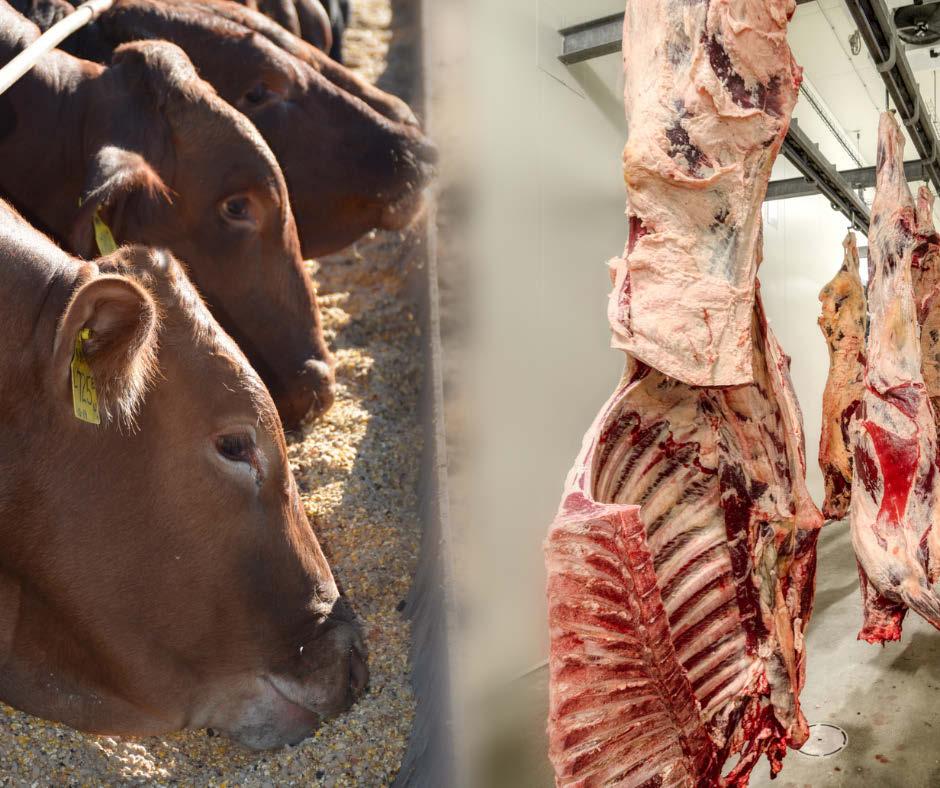

Image by Jim McWilliams

























For over 22 years, Rawhide Portable Corral has been leading the portable corral market with its innovative design and ability to adapt the corral based on customer needs. One such need throughout the years was that of a windbreak. With the same design in mind as the Rawhide Portable Corral, John McDonald has developed a patent pending portable, foldable, windbreak on wheels.
“The portable windbreak will include a hydraulically raised loafing shed roof on both sides of the main frame and will utilize the same patented torsion axle suspension that we recently added to our portable corrals,” said John McDonald, Owner and Inventor of Rawhide Portable Corral.
The portable windbreak is designed so that it may also be used in conjunction with the portable corral. The Rawhide Portable Corral flexible pinning system can be used to pin them together if necessary. The options on the windbreak also include small calving pens on each side of the main frame and a head gate.

“We expect this to be another revolutionary product for the livestock industry, similar to when we first developed the Rawhide Portable Corral,” McDonald says.
This design has been something that McDonald and his team have been working on for quite some time. Designs were tested and used in the Kansas wind throughout the research and development process.
“Our goal was to get it exactly like we wanted it before introducing it to the industry,” McDonald says. “We have shared it with a few of our dealers early on and they are very excited about it and the potential impact it will have on the industry.”
Videos of the system may be found on the Rawhide’s social media channels and website. Anyone interested may contact Rawhide via their main office in Abilene, KS at 785.263.3436, contacting one of their dealers, or by the website at www.rawhideportablecorral.com












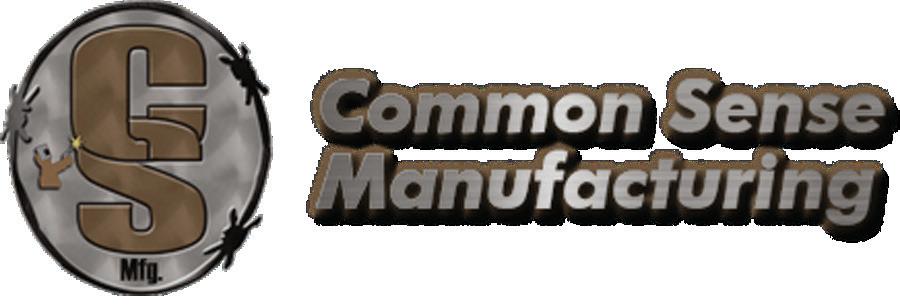




















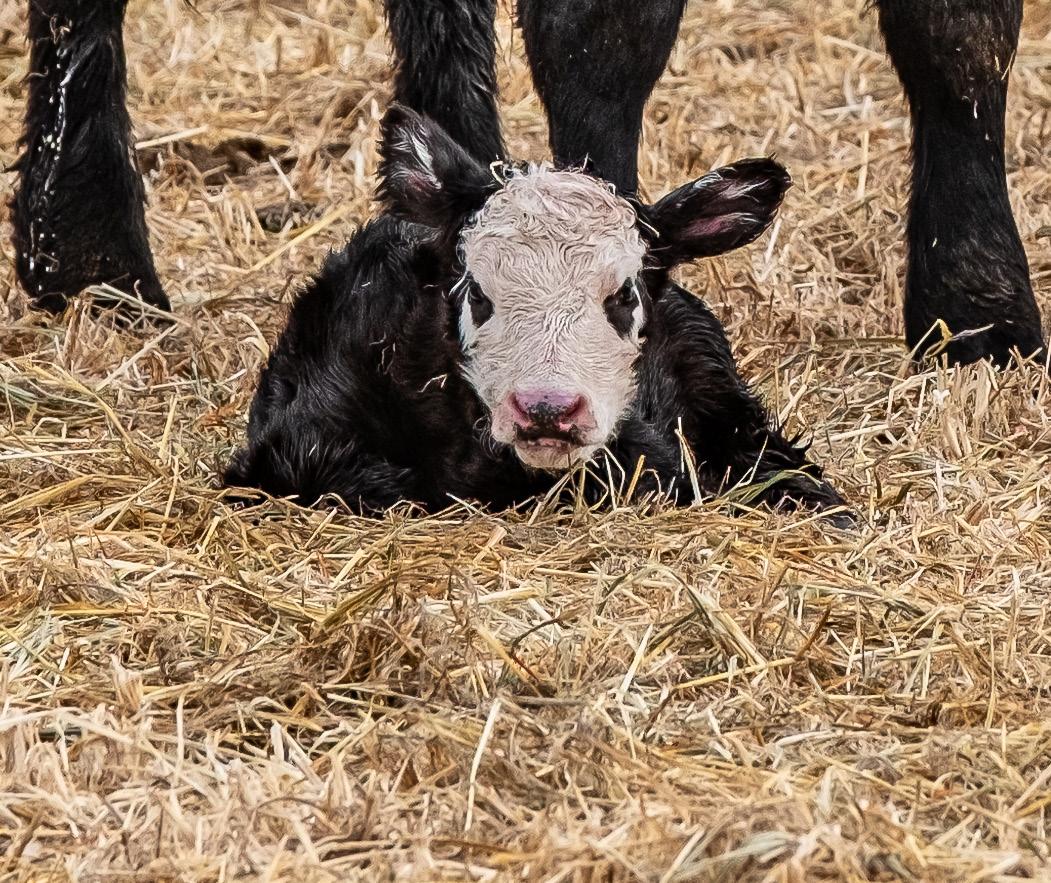
Healthy newborn calves and improved conception rates start with cow herd nutrition. Vitalix tubs are the ideal delivery system to provide essential nutrition for calving. Vitalix uses technologies that are proven to improve colostrum quality, calf health and immunity, all while supporting the mother cow now, and more offspring to come. Learn more at Vitalix.com.








































